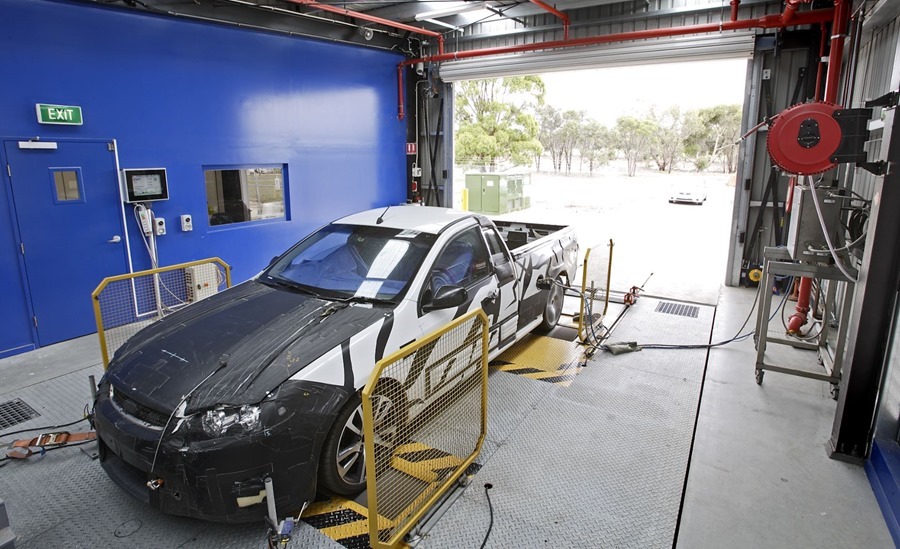
Humans are amazing at many things. Unfortunately doing the same thing, over and over again, isn’t one of them. In an environmental wind tunnel, Ford test vehicles in extreme conditions, from –40 to +55 degrees. This simulates the harshest driving conditions in the world and with Ford selling vehicles into all corners of the globe, they need to ensure the level of reliability and durability is extremely high.
These test simulations may last up to 300 hours, which is obviously not possible for a human to conduct. To achieve this level of endurance and a consistency across tests, like for different models, they have created robots to drive the vehicles. So sophisticated are these robots that they are made to look like humans and have human abilities. These robots can apply acceleration, change gears and even speed to 250km/hr throughout the test.
Given the length of these tests, the issue of fuel becomes a problem. Running out of fuel would create a hard limit on the total possible endurance they could test, which led engineers to create and automatically refuelling rig. When you see this photo, you have a visceral reaction as it goes against everything we’ve been told, that a vehicle has to be stationary, has to be turned off to even think about dealing with fuel.
Essentially the fuel rig is connected to the car and feeds the fuel tank with constant fuel to ensure the lengthy tests can complete uninterrupted. Thanks to the uncomplaining robot driver behind the wheel, there are no toilet or meal breaks, there are no breaks for sleep or to change drivers, just a continuous endurance test. With the vehicle strapped into a dyno, the car is tested for drivetrain component reliability and to ensure critical fluids like engine oil, remain inside predefined thermal envelopes.
While computer modelling does provide some insight into how vehicle components should behave when exposed to extreme conditions, that has to be verified by going these extremes in real world testing.
The results of tests like these are fed back into product development to ensure future vehicles are improved and not susceptible to any identified problems.
Ford also showed off their emissions lab where they are able to ensure vehicles meet global standards. When asked if global vehicles like the Focus are built to meet the toughest standards internationally, I was told, that that isn’t the case. While that build once, ship everywhere approach would yield benefits in production simplicity, it would place Ford vehicles at a disadvantage in markets that don’t enforce the highest emission standards.
Ford also has a massive baffled room, with a larger roller, quieter, adjustable dyno in the floor. Our voices in this room sounded different, much like when you’re in a recording studio, however instead of just foam baffles, these were made of fibreglass and surrounded in perforated metal enclosures that allow for easy cleaning. This audio testing environment allows Ford to check the vehicle volumes without reflective sound. This has lead to a quieter cabin in new products like the Everest, after findings from the Ranger.
Disclaimer: Jason travelled to the Proving Ground in Geelong as a guest of Ford.
